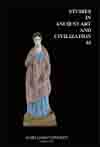The applications of airborne laser scanning in archaeology
The applications of airborne laser scanning in archaeology
Author(s): Kasper HanusSubject(s): Archaeology
Published by: KSIĘGARNIA AKADEMICKA Sp. z o.o.
Keywords: Airborne Laser Scanning; Light Detection and Ranging; aerial archaeology
Summary/Abstract: LiDAR (Light Detection and Ranging) is a new tool that has been changing aerial archaeology since the late 1990s. By using a georeferenced laser beam, it can survey through tree canopies. This ability allows researchers to track anthropogenic remains in woodland and jungle environments. The device has great potential in archaeology as vast areas of our planet are covered with trees. A systematic survey may uncover new archaeological sites and determine the full geographical extent of partially known features. The LiDAR system is based on a device measuring distance between the aircraft and the ground. Due to the high density nature of the laser beams used, there is a significant chance that some of them penetrate through canopies and reflect off the ground. The second step in this process is to differentiate of points that are reflected off of tree trunks and ground to make a digital elevation model (DEM) of the bare surface. The presentation of results has also been problematic in the past because the human brain is unable to perceive DEMs. To solve this problem, there are many alternative methods of display such as hill-shade imaging and three-dimensional modeling. Through this process, one is able to find traces of past human activity. Important case studies in Europe and North America will be mentioned.
Journal: Studies in Ancient Art and Civilization
- Issue Year: 2012
- Issue No: 16
- Page Range: 233-238
- Page Count: 18
- Language: English

